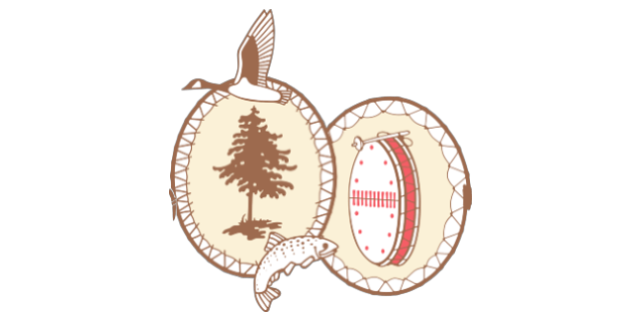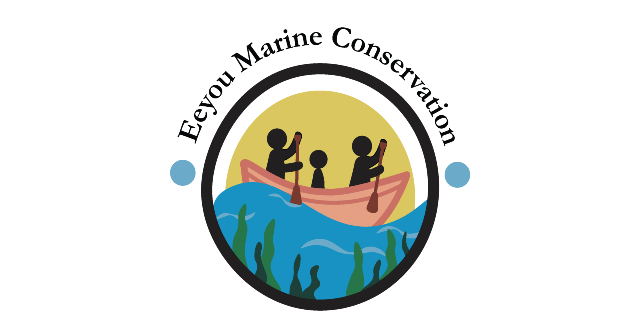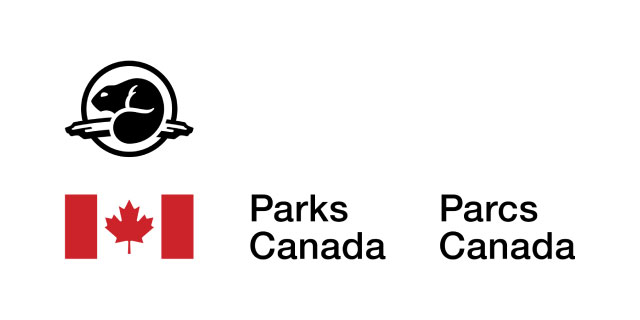
Canada geese flying over river and forest shoreline in Eeyou Istchee, Eastern James Bay.
© All rights reserved by Cree Nation Government.
Wiinipaakw: proposed Indigenous protected area and national marine conservation area (IPA-NMCA)
The Cree Nation Government and Parks Canada announced the completion of the feasibility assessment for the proposed Wiinipaakw Indigenous protected area and national marine conservation area and have signed a Memorandum of Understanding to move towards the protection of these waters. Read the news release.
Project description
Home of the Crees, the proposed Wiinipaakw (James Bay) Indigenous Protected Area and National Marine Conservation Area (IPA-NMCA) is in offshore areas of Eastern James Bay, aligned with the mouth of Chisasibi-Big River south to the Québec-Ontario border. This large seascape is home to species-at-risk such as polar bears, includes a significant local population of beluga whales, and is an important hub for migrating geese and ducks.
The area is within the Eeyou Marine Region Land Claims Agreement (EMRLCA) and plays a vital role in the culture, economy, history, and way of life for the Crees of Eeyou Istchee.
If established, the proposed IPA-NMCA in offshore waters would:
- be protected as an Indigenous Protected Area (IPA) through mechanisms determined by the Cree and as a National Marine Conservation Area under the Canada National Marine Conservation Area Act and Chapter 6 of the EMRLCA
- recognize and support Cree stewardship and leadership in conservation under a dual designation as an Indigenous Protected Area and National Marine Conservation Area
- contribute to the long-term economic, social, and cultural well-being of the Crees and coastal communities
- protect and conserve marine ecosystems, biodiversity, and sustainability
- contribute to representing the James Bay Marine Region in Parks Canada’s Marine System Plan.
- contribute to the continuation of Cree way of life and culture
- promote awareness and understanding of Cree culture among Canadians
Learn more about Cree Nation Government protected areas and marine conservation..
Partners
In May 2019, the Government of Canada and the Cree Nation Government signed a Memorandum of Understanding (MOU) to assess the feasibility of creating a national marine conservation area (NMCA) in Eastern James Bay.



Current project stage
The establishment of a new NMCA generally follows a 5-step process. The establishment process for each NMCA is as unique as its features and considerations. There is no specific timeframe for moving through the process.
This project is currently assessing the feasibility of establishing an NMCA.
-
Completed1 Identify representative marine areas
-
Completed2 Select a candidate NMCA
-
Current step3 Assess feasibility of an NMCA
-
4 Negotiate establishment agreement(s)
-
5 Designate and protect NMCA in legislation
Steering committee
The mandate of the steering committee is to guide the feasibility assessment process and to provide recommendations to respective parties. It comprises 2 representatives of the Cree Nation Government and 2 representatives of Parks Canada.
During this feasibility assessment, diverse knowledge and perspectives on the area are compiled. Shared Cree knowledge is being sought and incorporated, existing scientific information gathered, and key right holders and stakeholders engaged.
Indigenous inherent and Treaty rights in an NMCA
The Cree’s Inherent and Treaty rights to harvesting, hunting, fishing, and trapping will be protected in all aspects of an NMCA in the spirit and intent of the United Nations Declaration on the Rights of Indigenous Peoples.
It is important to note that the feasibility assessment is not intended to define, create, recognize, deny, or amend any of the rights of the Parties including Aboriginal title or rights, or treaty rights, within the meaning of sections 25 and 35 of the Constitution Act, 1982, and the Eeyou Marine Region Land Claims Agreement (EMRLCA).
Proposed study area
The proposed study area is approximately over 26,000 km2.
A study area refers to the area on which the steering committee concentrates their efforts to assess feasibility of establishing a proposed NMCA.
Activities in an NMCA
The Government of Canada is committed to achieving reconciliation with Indigenous peoples through a renewed, nation-to-nation, and government-to-government relationship based on recognition of rights, respect, co-operation, and partnership as the foundation for transformative change. Parks Canada and Indigenous governing bodies co-develop collaborative governance models to ensure long-term stewardship and ecological sustainability of these sites.
While federal departments such as Fisheries and Oceans Canada and the Canadian Coast Guard as well as Transport Canada retain their responsibilities inside the boundaries of an NMCA, efforts are made to ensure all authorities and stakeholders operate within the vision of the NMCA.
Activities not allowed
Generally, the following activities described in the Protection Standard for Federal Marine Protected Areas are not allowed in NMCAs:
- oil and gas exploration, development, and production
- mineral exploration and exploitation
- disposal at sea of waste and other matter, dumping of fill, deposit of deleterious drugs and pesticides, and enhanced restrictions on vessel discharges
- bottom-trawl gear
The scope of each of these activities including exceptions to their application are described in the Protection Standard for Federal Marine Protected Areas.
Timeline and next steps
During the feasibility assessment, both parties will engage to seek feedback and comments from rights holders and stakeholders. The feasibility assessment will conclude with a report and recommendations that will be submitted to the Grand Chief of the Grand Council of the Crees (Eeyou Istchee) as well as the Minister of Environment and Climate Change Canada.
Should the Grand Chief of the Grand Council of the Crees and the Minister of Environment and Climate Change Canada support that a national marine conservation area is feasible, the next step will be for both parties to negotiate an establishment agreement.
Contact us
Parks Canada project team
Email: ebjamnc-ejbnmca@pc.gc.ca
Related links
- Date modified :